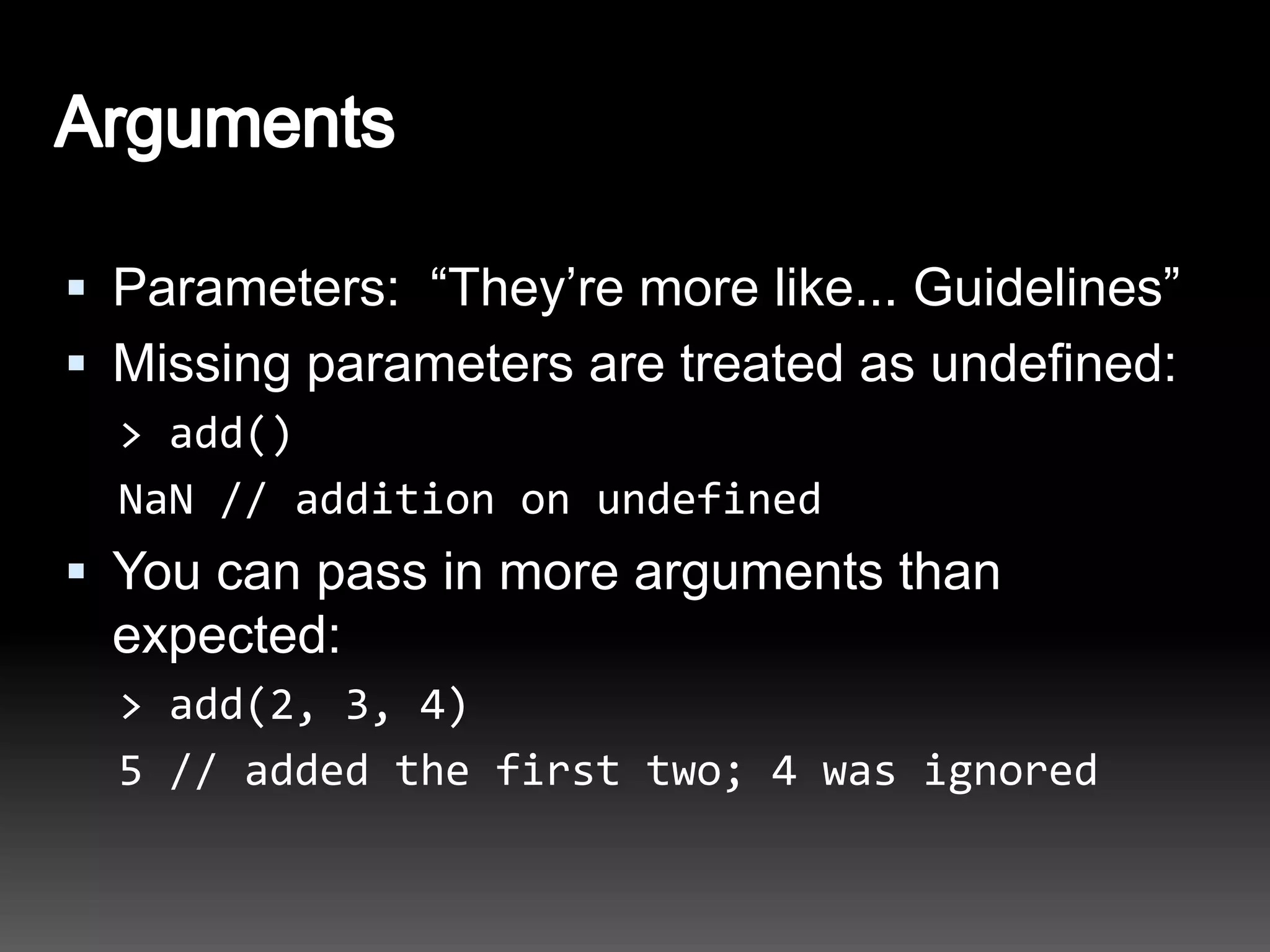The document discusses the history and evolution of JavaScript, including its origins from Java and LiveScript, standardization as ECMAScript, and key features such as dynamic typing, objects, functions, and prototypal inheritance. It also covers JavaScript data types like numbers, strings, Booleans, objects, and functions, and how the language handles values, scope, operators, and other elements.


















![obj.name = "My Name" var name = obj.name; Or obj["name"] = "My Name"; var name = obj["name"]; Semantically equivalent; the second uses strings so can be decided at run-time (and can be used for reserved words)](https://image.slidesharecdn.com/tjpl-141112223904-conversion-gate01/75/The-JavaScript-Programming-Language-19-2048.jpg)
![var obj = { name: "Carrot", "for": "Max", details: { color: "orange", size: 12 } } > obj.details.color Orange > obj["details"]["size"] 12](https://image.slidesharecdn.com/tjpl-141112223904-conversion-gate01/75/The-JavaScript-Programming-Language-20-2048.jpg)
![Iterate over the keys of an object: var obj = { 'name': 'Simon', 'age': 25 }; for (var attr in obj) { alert (attr + ' = ' + obj[attr]); } Not to be used with Arrays](https://image.slidesharecdn.com/tjpl-141112223904-conversion-gate01/75/The-JavaScript-Programming-Language-21-2048.jpg)
![ A special type of object: Keys are whole numbers, not strings. Use [] syntax, just like objects > var a = new Array(); > a[0] = "dog"; > a[1] = "cat"; > a[2] = "hen“; > a.length 3 No such thing as “Associative Arrays”](https://image.slidesharecdn.com/tjpl-141112223904-conversion-gate01/75/The-JavaScript-Programming-Language-22-2048.jpg)
![More convenient notation: > var a = ["dog", "cat", "hen"]; > a.length 3 var a = [10, "dog", false, "elephant"]; (you can have mixed content in arrays)](https://image.slidesharecdn.com/tjpl-141112223904-conversion-gate01/75/The-JavaScript-Programming-Language-23-2048.jpg)
![> var a = ["dog", "cat", "hen"]; > a[100] = "fox"; > a.length 101 typeof a[90] == 'undefined' array.length is always one more than the highest index The safest way to append new items is: a[a.length] = item;](https://image.slidesharecdn.com/tjpl-141112223904-conversion-gate01/75/The-JavaScript-Programming-Language-24-2048.jpg)






![The arguments special variable provides access to arguments as an array-like object function add() { var sum = 0; for (var i = 0, j = arguments.length; i < j; i++) { sum += arguments[i]; } return sum; } > add(2, 3, 4, 5) 14](https://image.slidesharecdn.com/tjpl-141112223904-conversion-gate01/75/The-JavaScript-Programming-Language-31-2048.jpg)


